Situated on the old shopping street of the capital’s poorest neighbourhood, this dilapidated corner was never going to garner a great deal of attention. A long-closed off license and some slowly disappearing urban art are very much a niche interest even in a city like Tokyo.
That said, in its own way it was special. It also changed quite a bit over the years. The shopping street used to be covered until the roof was deemed unsafe and had to be removed. Then there was its unique artwork — the increasingly ripped and faded nature of which only added to its appeal. Plus those cracked and taped up windows that for one reason or another simply never got replaced.
All of which made it something to look out for and occasionally photograph. A building that didn’t really make sense in a modern, ever-changing metropolis. And yet there it always was with its many nods to the past and the people who’d called it home. Or at least it always was there, until one day quite recently when suddenly it wasn’t.
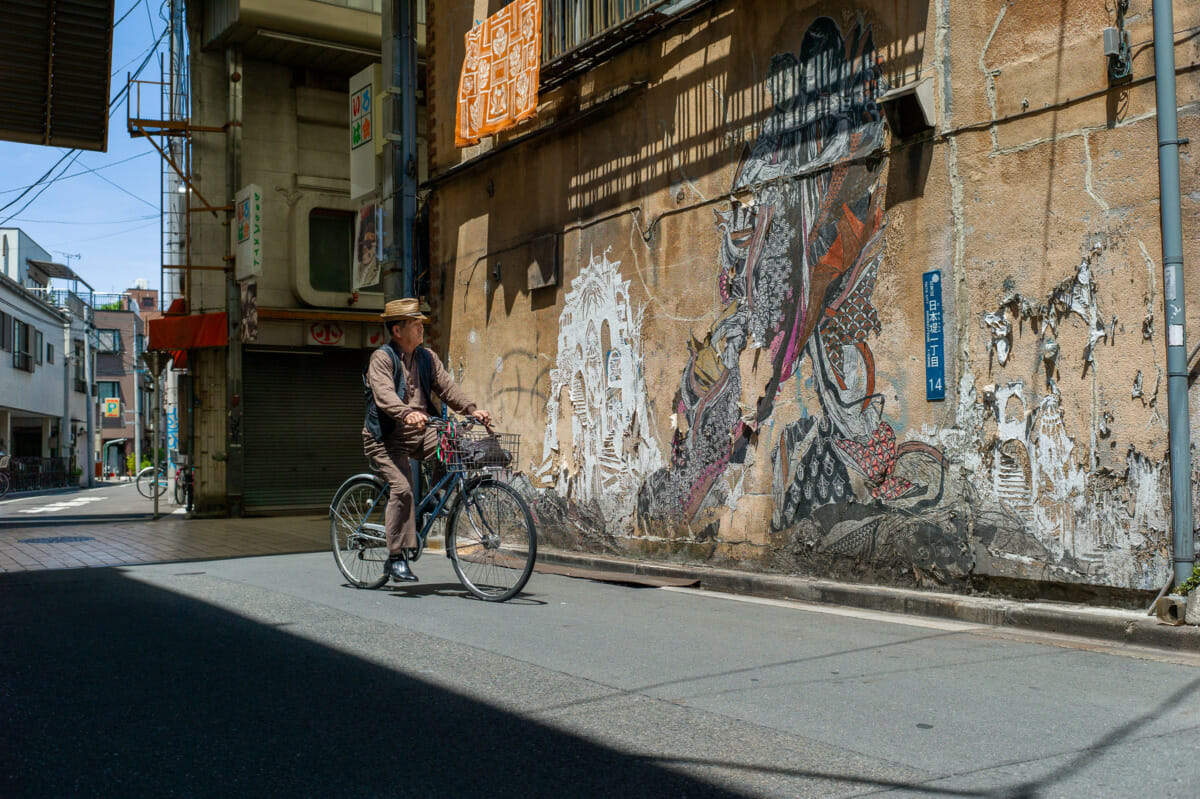

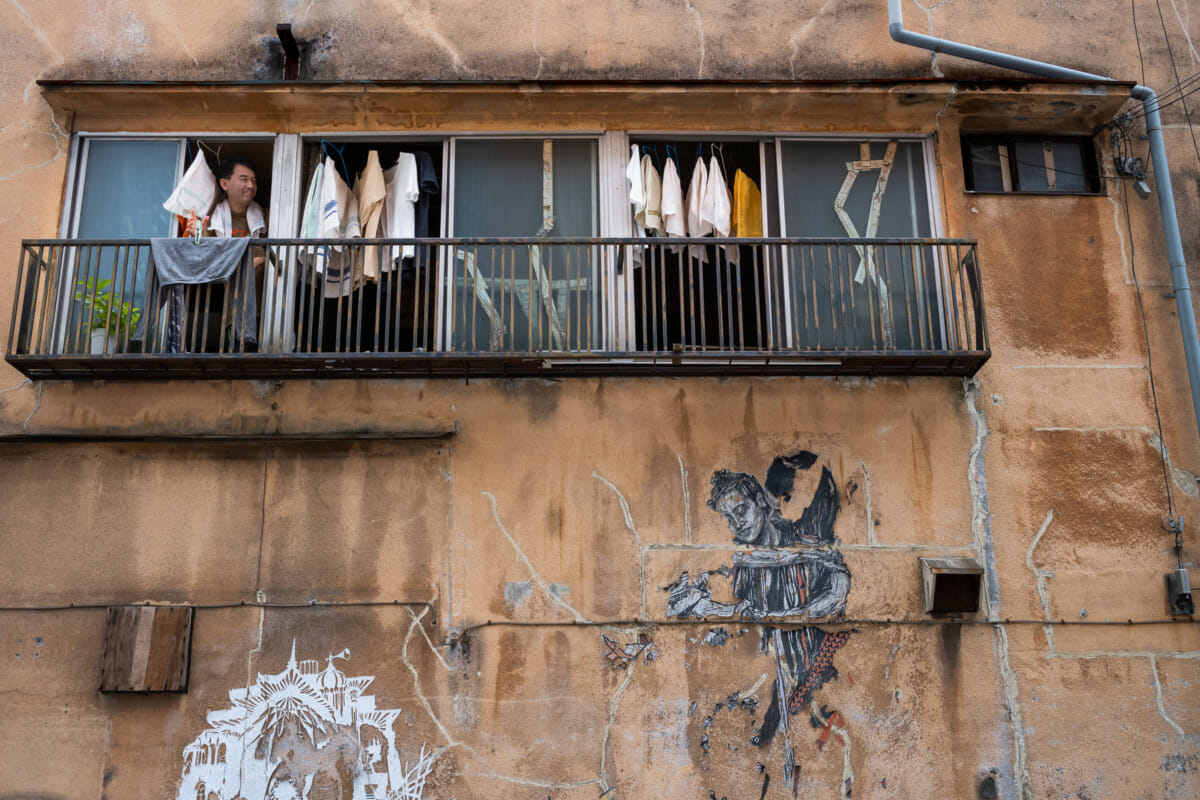

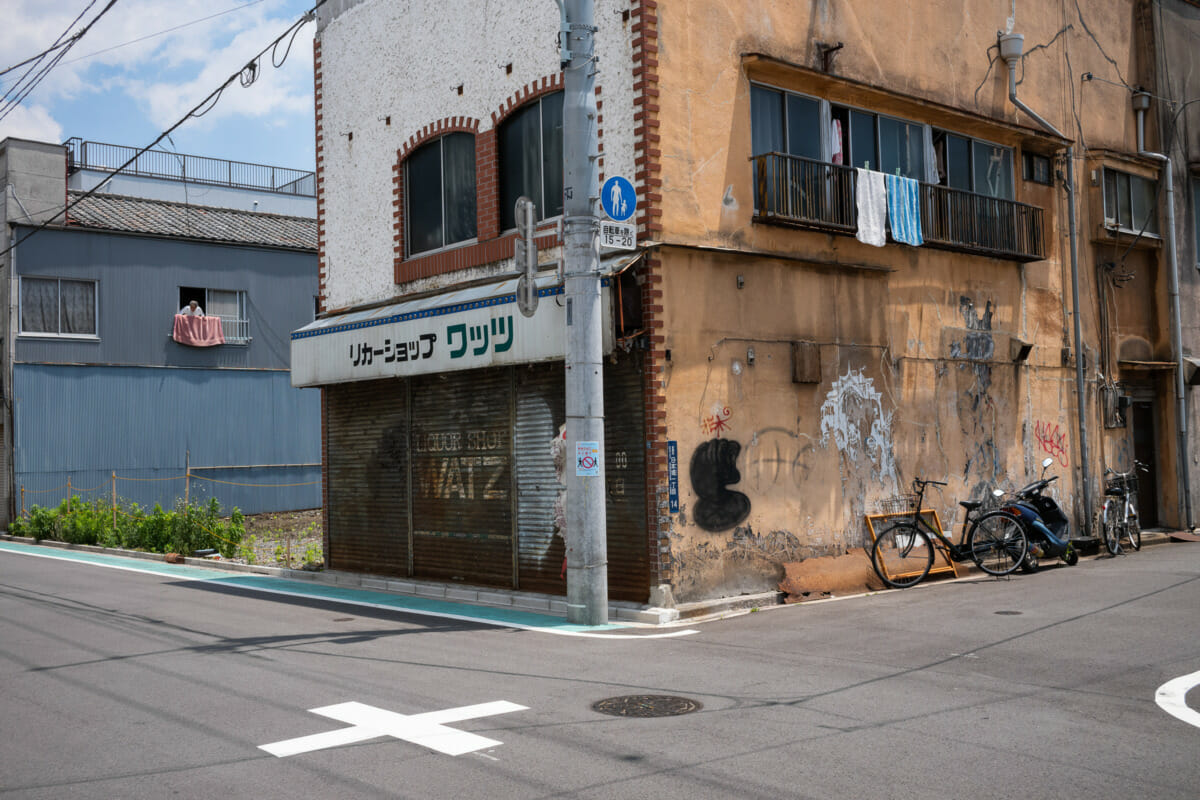
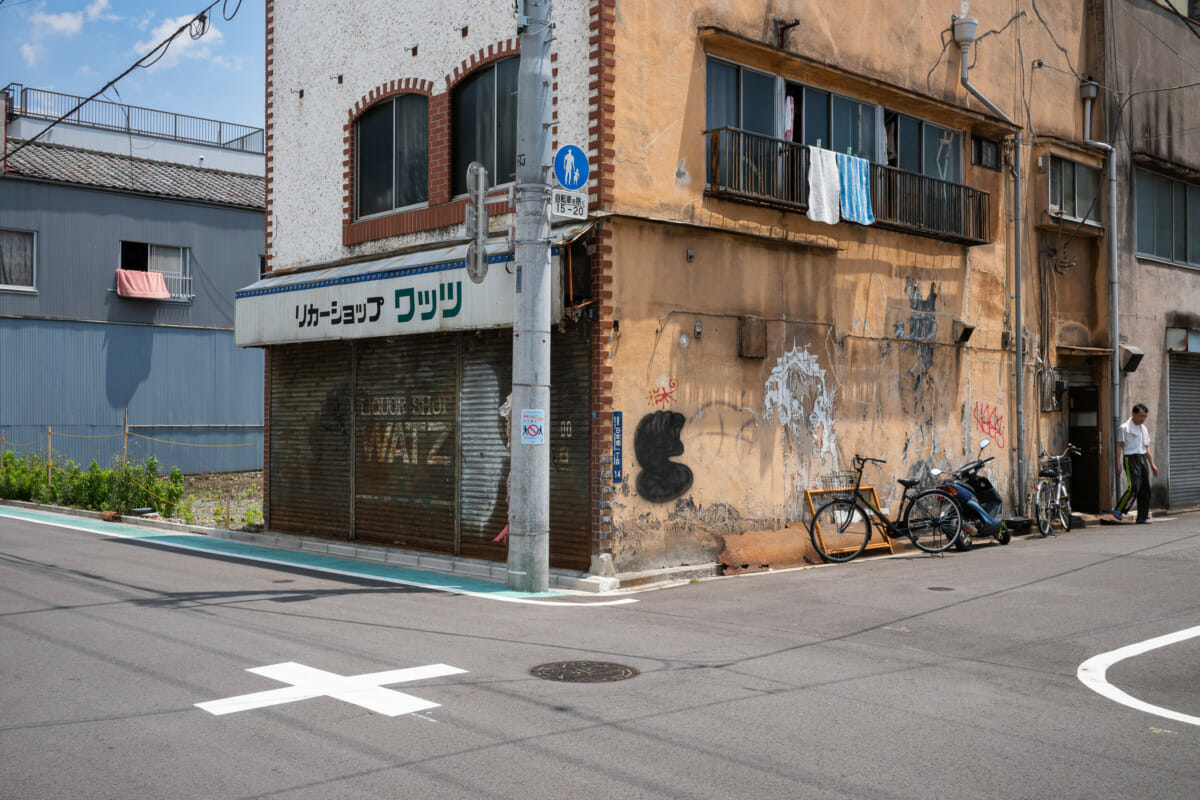
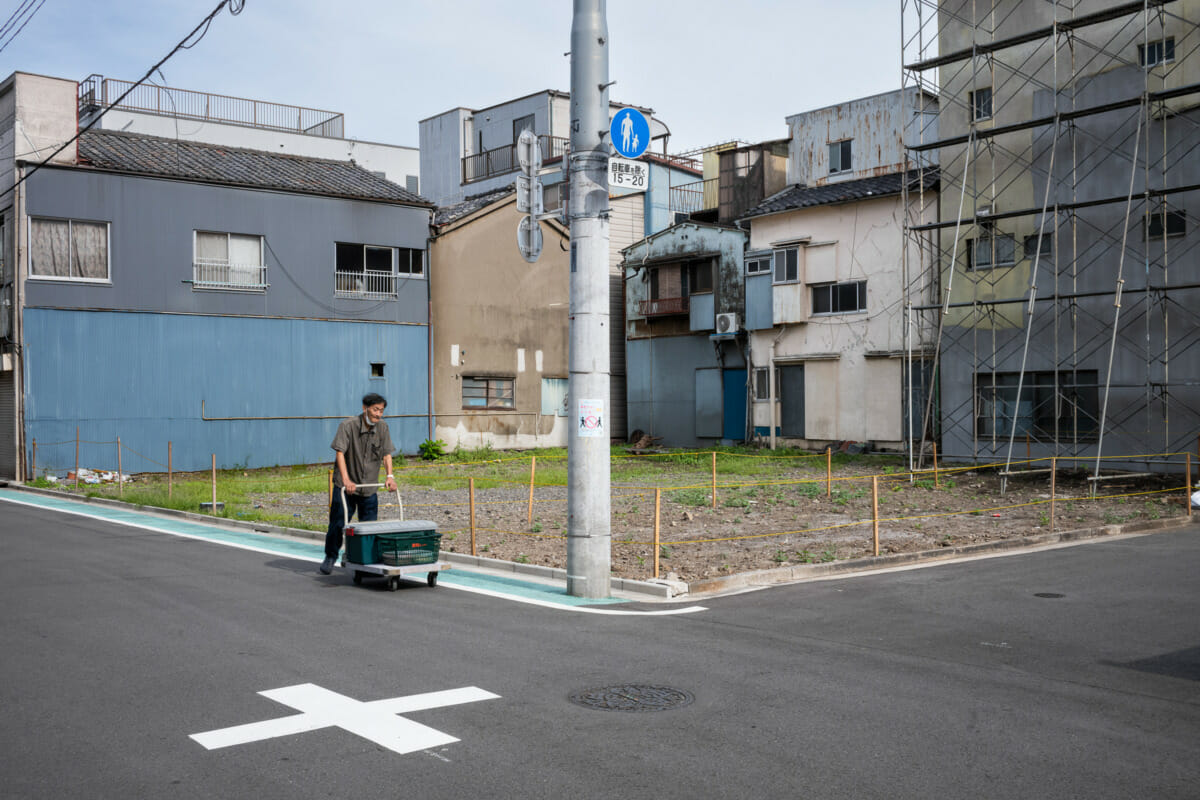
Sean says
I stayed in a hotel near near here before corona. I found it interesting but kinda sad.
Lee says
Yeah, it’s definitely not the nicest of areas. Nowhere near as much obvious poverty as there used to be, but for Tokyo it’s still very different than anywhere else.
cdilla says
So good to see these photographs again – and at least one earlier one I think for the first time.
Sad but inevitable to hear it has gone. It has been interesting to see it charted through your photographs over the years.
The change in this area is so stark as to be barely believable
From March 2015
https://tinyurl.com/3a75z3m6
And from last month
https://tinyurl.com/3a8r5zev
At first I thought the home’s Zashiki Warashi left for some reason.
But on drawing back and seeing the scale of change an altogether larger and more destructive Yokai would seem more likely – perhaps one living under the SkyTree 🙂
Lee says
Thanks a lot. Yeah, one I don’t recall showing before.
Yes, it has changed enormously already, and the demolition continues apace. A lot of it will be almost unrecognisable fairly soon.
A lot of the change has happened since Skytree was built, so maybe that is the case!
Richard says
Old buildings like those make me think of what Tokyo must have been like many years ago when the country was not as wealthy as it became by the 1980’s….maybe even back to the years before the Great Pacific War?
So great that you have these photos because these places will probably all be gone in the coming years.
Lee says
That’s a very good point. I always seek out photos of such places in the 1950s and 1960s. They never cease to fascinate me. And yeah, such buildings do give us a glimpse oh how most of the city once looked.
Cheers. Not why I started taking them. That was just ‘cos I liked how they looked. But now that they are disappearing, I’m doubly glad I did.
Richard says
Agreed about the importance of the photos in the context of a changing Tokyo. Have you ever done, or thought about doing, an exhibition comparing these old buildings with the new? It would be fascinating to compare the old ones with what replaced them.
My wife’s aunt and uncle did that. When I first met them in the early1970’s they were living and raising their two sons in a comfortable two story home which they had purchased/built probably 15 years before. Then in the mid 90’s they demolished that home and built a new one on the same site so their eldest son (who was about 40 years old) and his wife could live on the second floor above them. Of course, the newer home was more ‘modern’ with more conveniences with a better heating and air conditioning system, etc.
Lee says
I haven’t, no, but it would be good to do something with my growing collection of ‘before and after’ shots. Certainly got quite a few sets now.
That’s the thing. It’s easy for me to bemoan the disappearance of these places. It is sad. So much of the city’s character is being lost. But I don’t have to live in them. Winters must be truly horrible, and they can’t be very comfortable at any time of the year really….
Richard says
From 1969-71 I lived in a 2DK apartment near Sangubashi station in Tokyo. The building was well maintained. No running hot water so did laundry by hand with cold water. In order to bathe I used a sento about 3 blocks away. Heat no winter was a small gas stove which ran on a rubber tube from the kitchen outlet. A small fan provided some ventilation in summer. COLD in winter and HOT in summer. Such was life in those days!